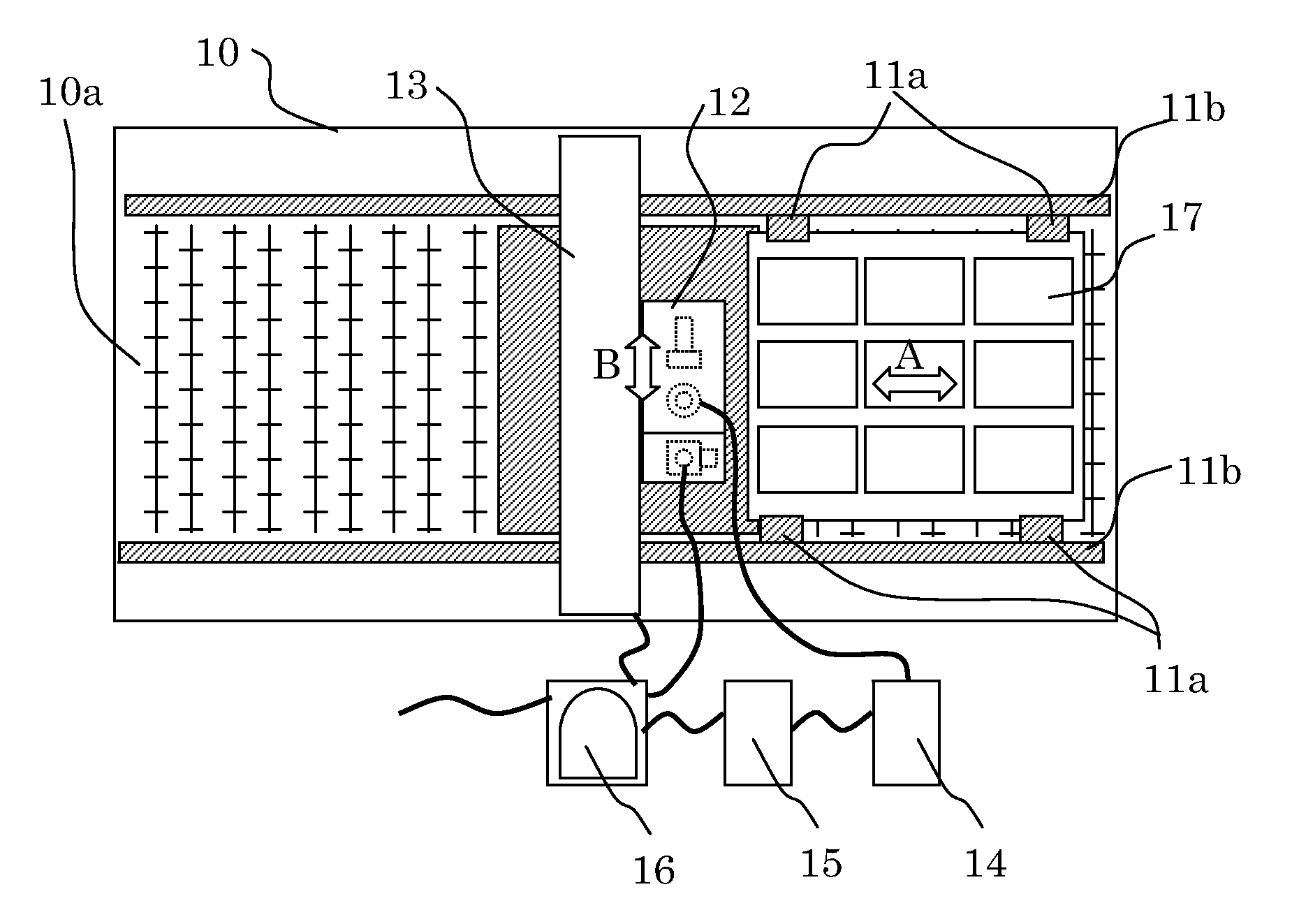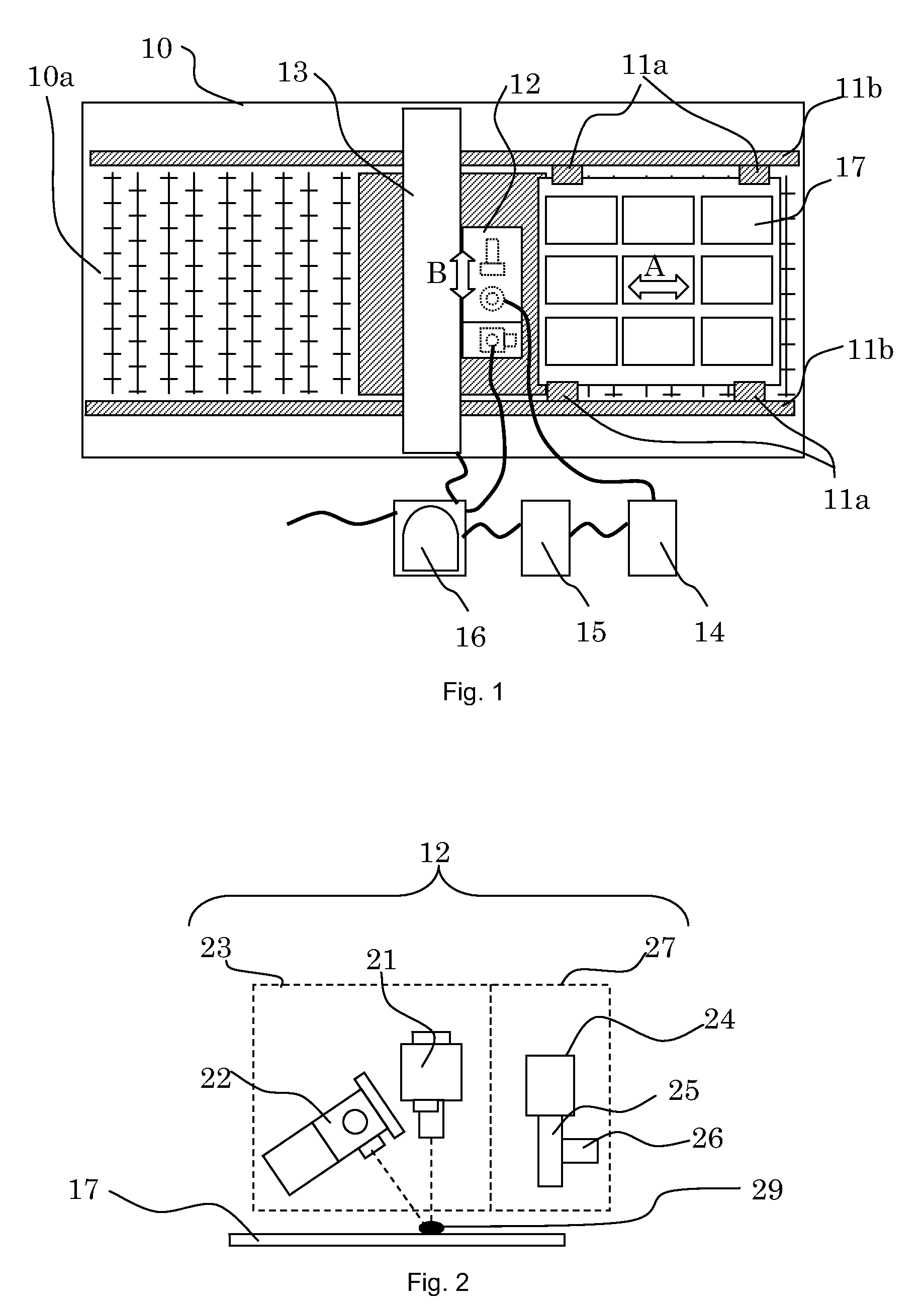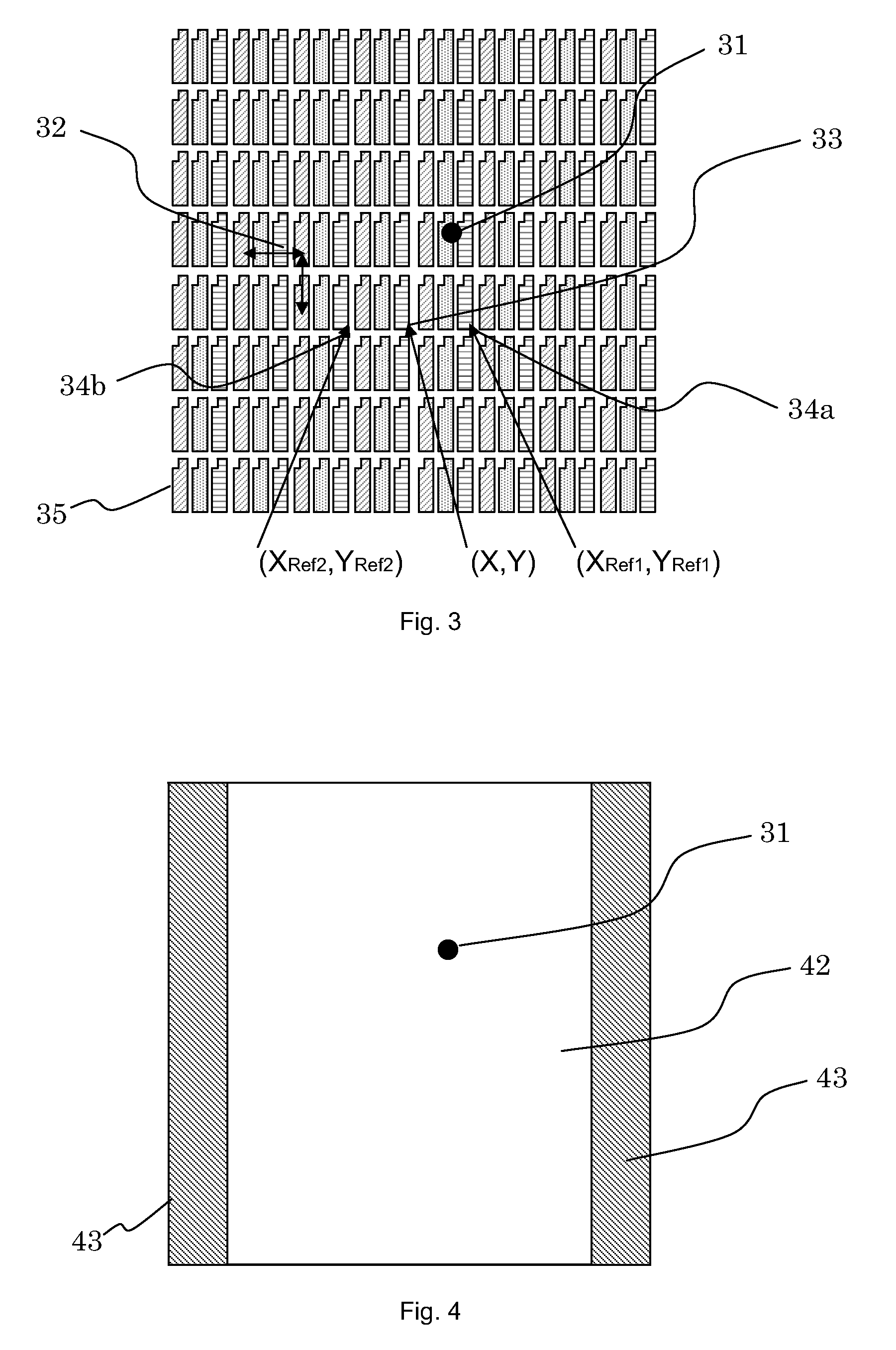Test method
a test method and substrate technology, applied in the direction of material analysis using wave/particle radiation, x/gamma/cosmic radiation measurement, instruments, etc., can solve the problems of foreign material with a diameter of 20 m or more, the surface of an and the opposite substrate is likely to be damaged. , to achieve the effect of effective and rapid test of the substra
- Summary
- Abstract
- Description
- Claims
- Application Information
AI Technical Summary
Benefits of technology
Problems solved by technology
Method used
Image
Examples
examples
[0114]In the test device having the above-mentioned structure shown in FIG. 1, a color filter was used as a test target and the X-ray source was driven under the conditions of a tube voltage of 100 kV and a tube current of 100 mA to perform a test for a measurement time of 10 seconds. An output of 15,000 cps was obtained from an Fe particle with a diameter of about 10 μm with energy of Fe-Kα rays (cps is a unit indicating the number of X-ray photons measured per second). Under the same conditions, an output of 200 cps was obtained from a resin sphere with a diameter of about 50 μm. Under the same conditions, an output of 180 cps was obtained from a position on the color filter where there was no defect. Then, when a threshold value was set to 1,000 cps, the determining unit could detect and determine the Fe particle with a diameter of about 10 μm.
PUM
| Property | Measurement | Unit |
|---|---|---|
| diameter | aaaaa | aaaaa |
| diameter | aaaaa | aaaaa |
| diameter | aaaaa | aaaaa |
Abstract
Description
Claims
Application Information
 Login to View More
Login to View More - R&D
- Intellectual Property
- Life Sciences
- Materials
- Tech Scout
- Unparalleled Data Quality
- Higher Quality Content
- 60% Fewer Hallucinations
Browse by: Latest US Patents, China's latest patents, Technical Efficacy Thesaurus, Application Domain, Technology Topic, Popular Technical Reports.
© 2025 PatSnap. All rights reserved.Legal|Privacy policy|Modern Slavery Act Transparency Statement|Sitemap|About US| Contact US: help@patsnap.com



